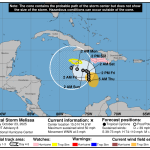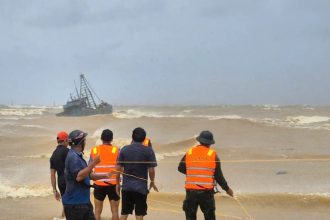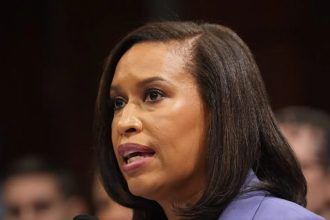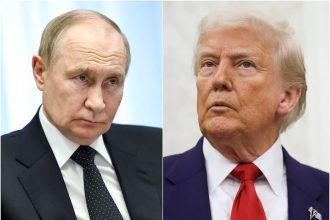JERUSALEM − His vice president said the trip was not about being a babysitter. His top diplomat said the visit was simply intended to make sure everything was “coming together” in the right way. His son-in-law said it was about working toward “completing the mission” and getting “everyone’s concerns aired.”
Just over a week after he himself visited the Middle East to oversee the signing of a Gaza ceasefire agreement, U.S. President Donald Trump has sent a flurry of top aides and officials to Israel to make sure the fragile truce is kept on track and moves on to what is expected to be a more challenging second phase.
“It’s not about monitoring in the sense of, you know, you monitor a toddler,” U.S. Vice President JD Vance said on Oct. 22 after meeting with Prime Minister Benjamin Netanyahu in Jerusalem. “It’s about monitoring in the sense that there’s a lot of work, a lot of good people who are doing that work, and it’s important for the principals in the administration to keep on ensuring that our people are doing what we need them to do.”
No boots on the ground: Vance spells out US role in Gaza’s security on visit to Israel
Vance wraps up his three-day trip to Israel on Oct. 23, the same day that U.S. Secretary of State Marco Rubio is due to arrive in the country. Rubio will meet with Israel’s leader the next day, according to Netanyahu’s office. Before he left for Israel, Rubio told reporters that it was important for senior U.S. administration officials to occasionally be on the ground in Israel because the ceasefire’s multiple phases would bring “challenges.”
Trump’s Middle East envoy, Steve Witkoff, and his son-in-law, Jared Kushner, have also been in Israel this week as part of efforts to protect an Israel-Hamas ceasefire that is less than two weeks old.
Hamas executed her son. Faith sustains her. Can a grieving mother help others heal?
“Both sides are transitioning from two years of very intense warfare to a peacetime posture,” Kushner said on Oct. 22 as he visited a new civilian-military coordination center in Israel near the Gaza border that will be managed by about 200 U.S. troops. The center will be used by U.S. and international officials to coordinate with aid groups and prevent any military-related flare-ups from turning into an escalatory spiral.
Eventually, if Gaza stabilizes, foreign troops could replace Israeli ones in Gaza as part of an international security force. No U.S. troops are expected to deploy to Gaza, but the center would help manage the force.
Trump deploys ‘Bibisitters’
The first phase of the Gaza ceasefire deal has largely held, though sporadic fighting since the deal was signed has erupted and left two Israeli soldiers and more than 40 Palestinians dead. In the deal’s first phase, Hamas released the last 20 living Israel hostages in exchange for nearly 2,000 Palestinian prisoners.
Hamas has also so far returned the bodies of at least 15 deceased hostages to Israel. About a dozen more remain. Israel has returned the bodies of more than 150 Palestinians to Gaza.
When Hamas attacked Israel on Oct. 7, 2023 it killed about 1,200 people and took 251 hostages. Israel’s subsequent military offensive in Gaza has killed tens of thousands of Palestinians.
Gaza: Two years of death and devastation visualized
The second phase of the deal is focused on more thorny issues such as Israel’s insistence that Hamas fully disarm and which group or groups will be allowed to assert authority over post-war Gaza. Netanyahu has repeatedly insisted that neither Hamas nor the Palestinian Authority, which governs parts of the Israeli-occupied West Bank, a separate non-contiguous Palestinian territory, will be permitted to play any such role.
The agreement brokered by the White House calls for more than a dozen nonpartisan technocrats to take over Gaza an interim basis, but that agreement is short on details, including a timetable for when it might happen.
There is also concern, according to reports in Israeli media, that Netanyahu may sooner or later attempt to exit the deal, and that Trump has flooded Israel with high-profile visits from Vance, Rubio, Witkoff and Kushner for this reason; to try to keep Netanyahu from resuming an all-out assault against Hamas.
Multiple U.S. media outlets have noted over the last few days that the Israeli press have been calling the American contingent the “Bibisitters,” a reference to Netanyahu’s nickname “Bibi.” The term “Bibisitters” is something Netanyahu himself coined in a 2015 election ad referring to what he characterzied as his trustworthiness. A U.S. official also referred to the visits as “Bibisitting,” according to CNN.
‘This is not the end.’ Vance seeks to salvage shaky Hamas ceasefire in whirlwind Israel trip
The White House did not immediately respond to a comment request.
Still, Vance appeared to be aware of the optics of so many high-ranking American officials showing up in Israel on the heel’s of Trump’s visit. “We don’t want a vassal state, and that’s not what Israel is,” he said after meeting with Netanyahu, in response to a question from an Israeli journalist.
“We don’t want a client state, and that’s not what Israel is. We want a partnership,” he said.
Vance also seems bullish on the ceasefire’s longer-term prospects. “This thing takes monitoring. And it’s going to take a lot of work,” he said. “I never said it was easy. But what I am is optimistic.”
This article originally appeared on USA TODAY: Vance, top Trump aides flood Israel to keep Gaza ceasefire on track









